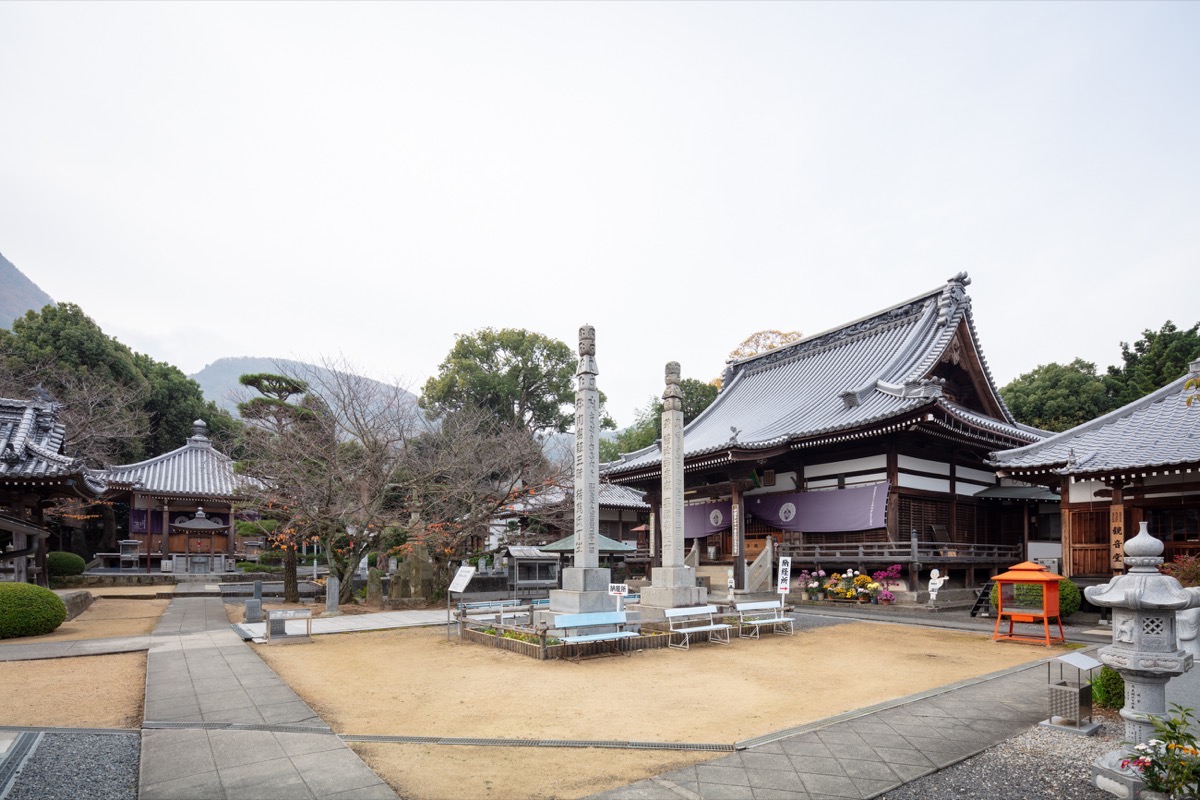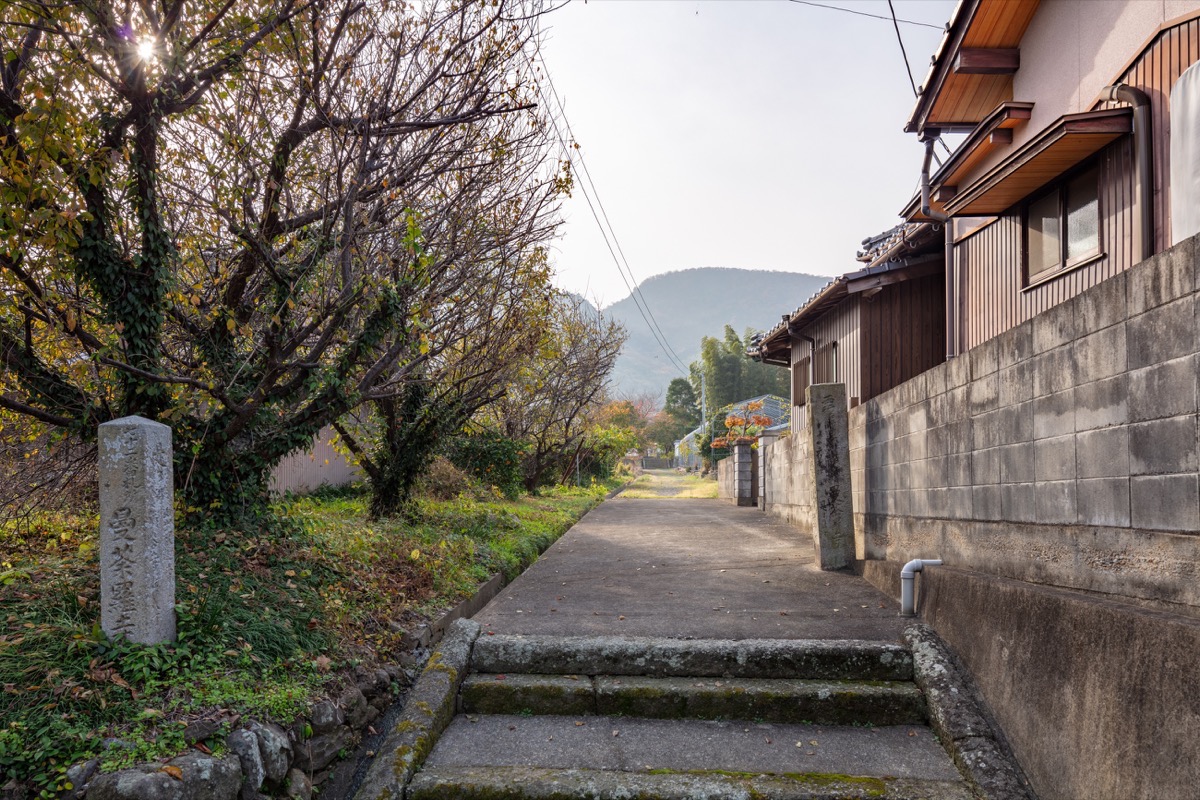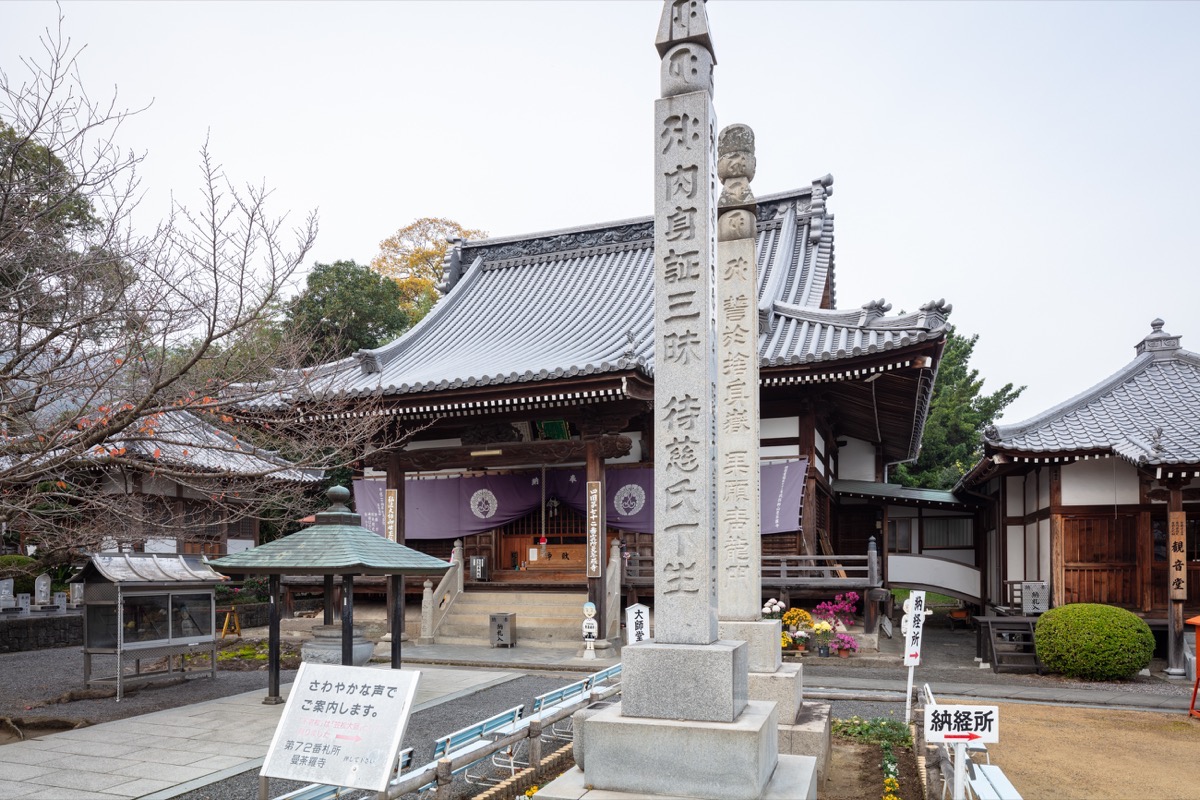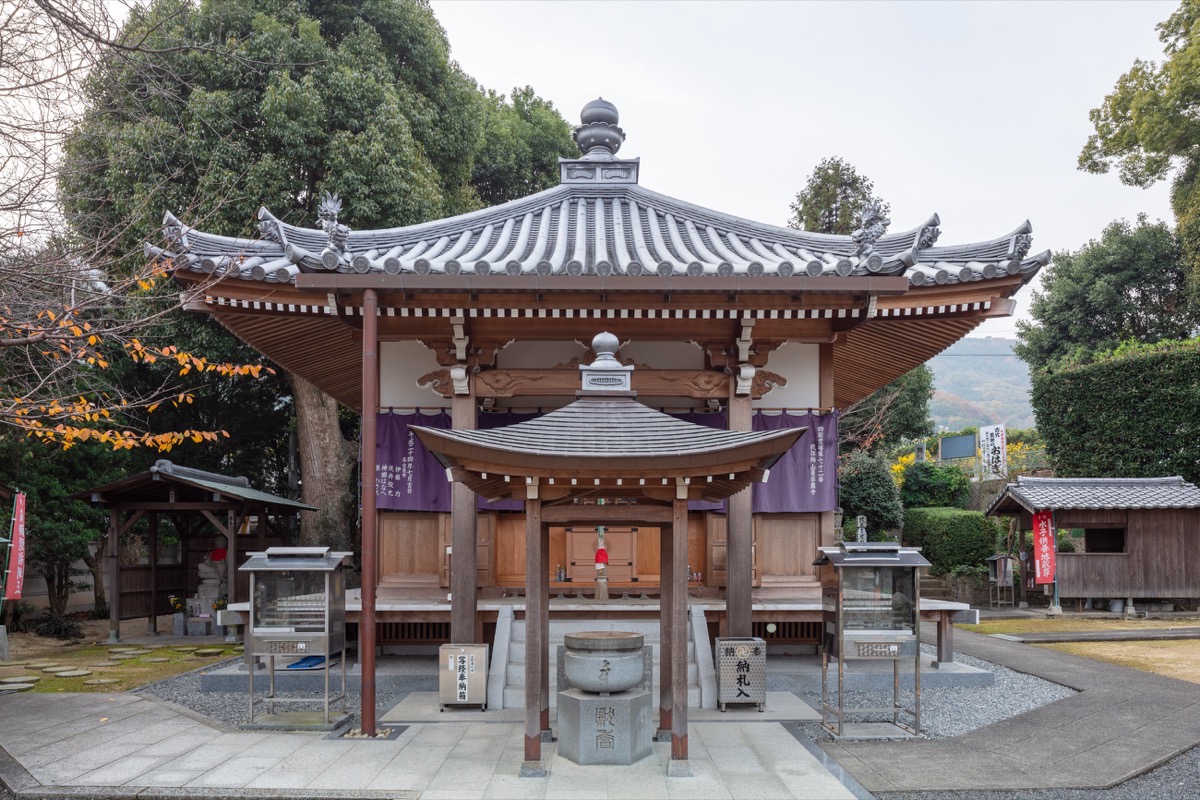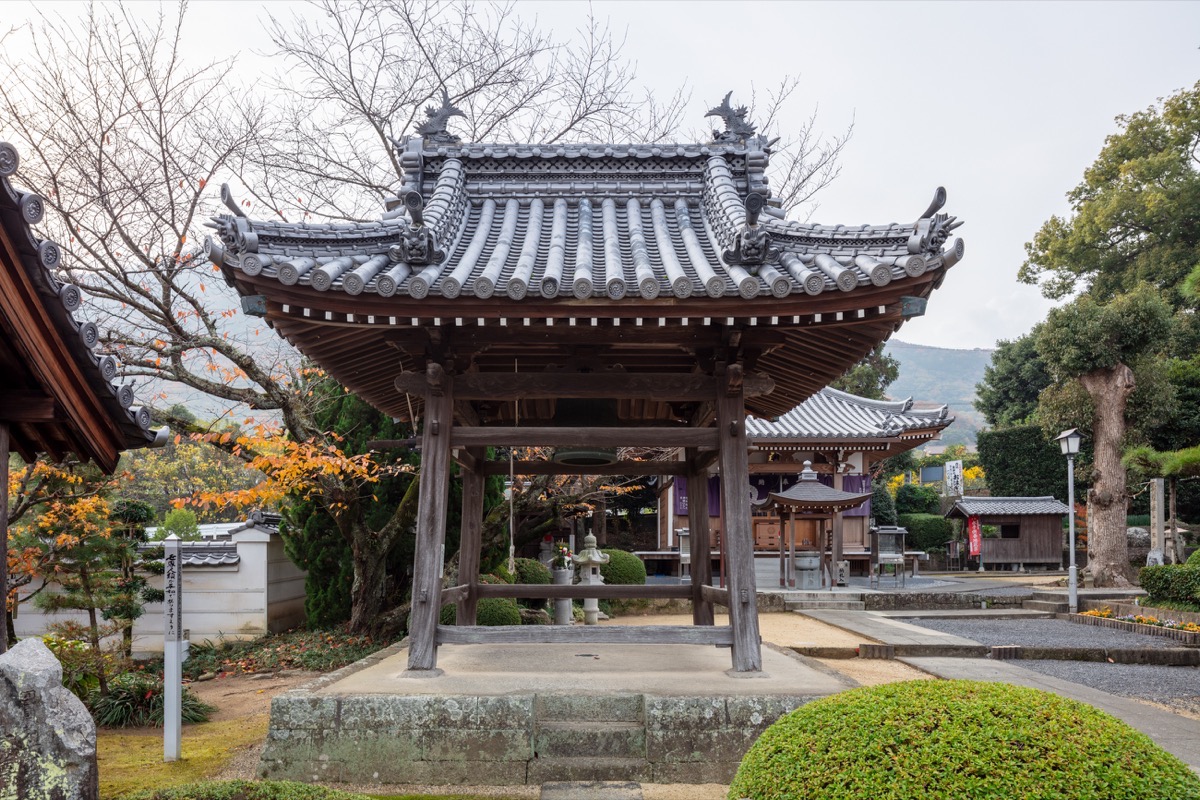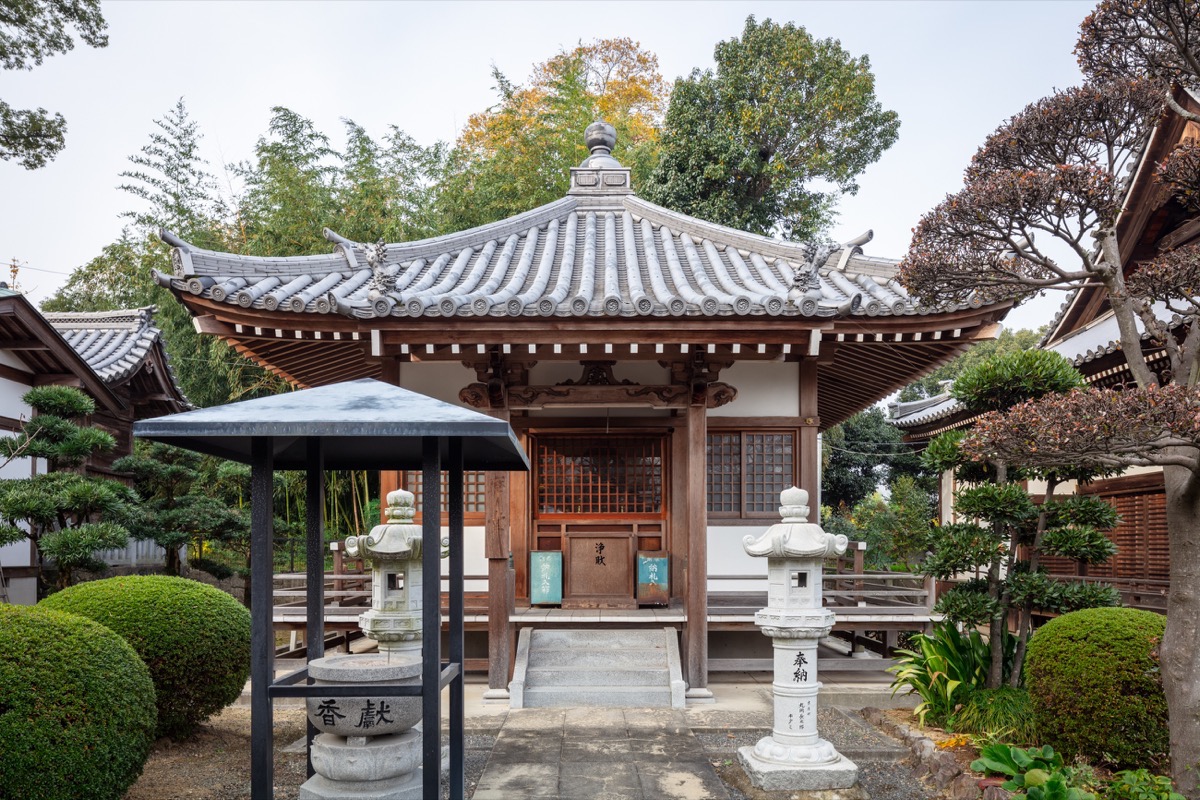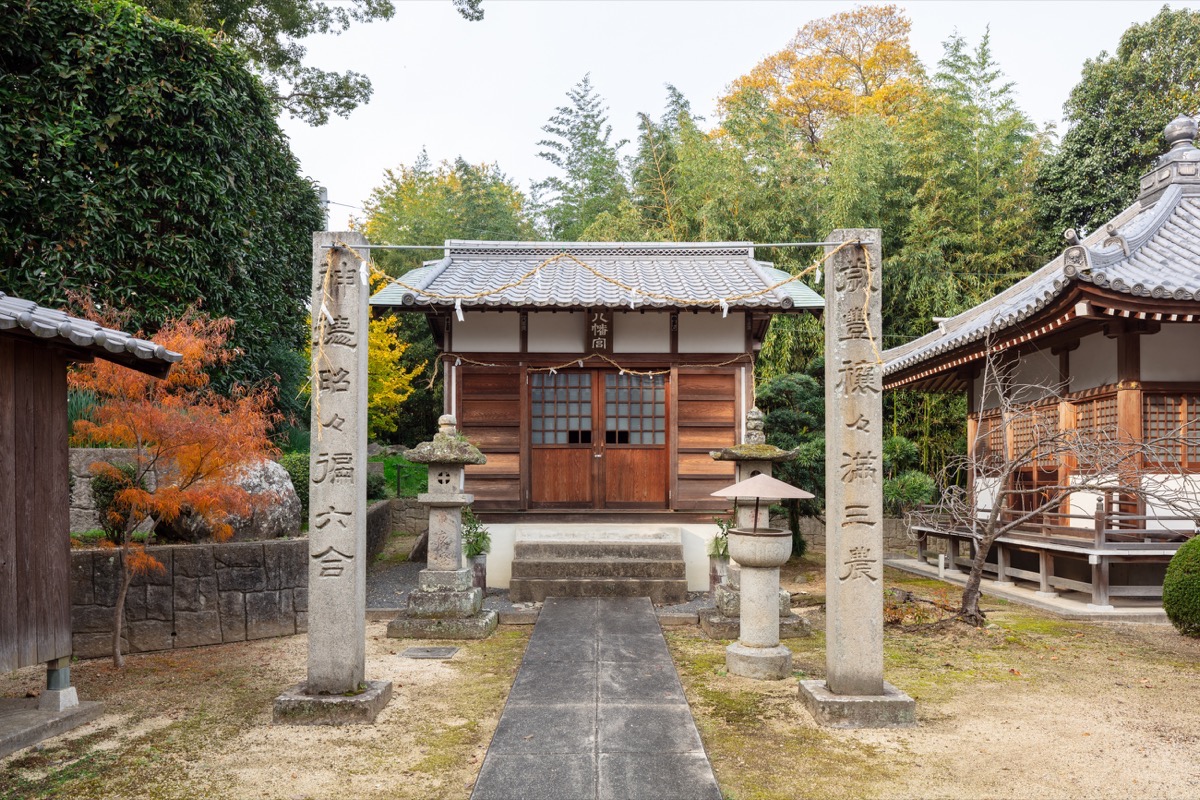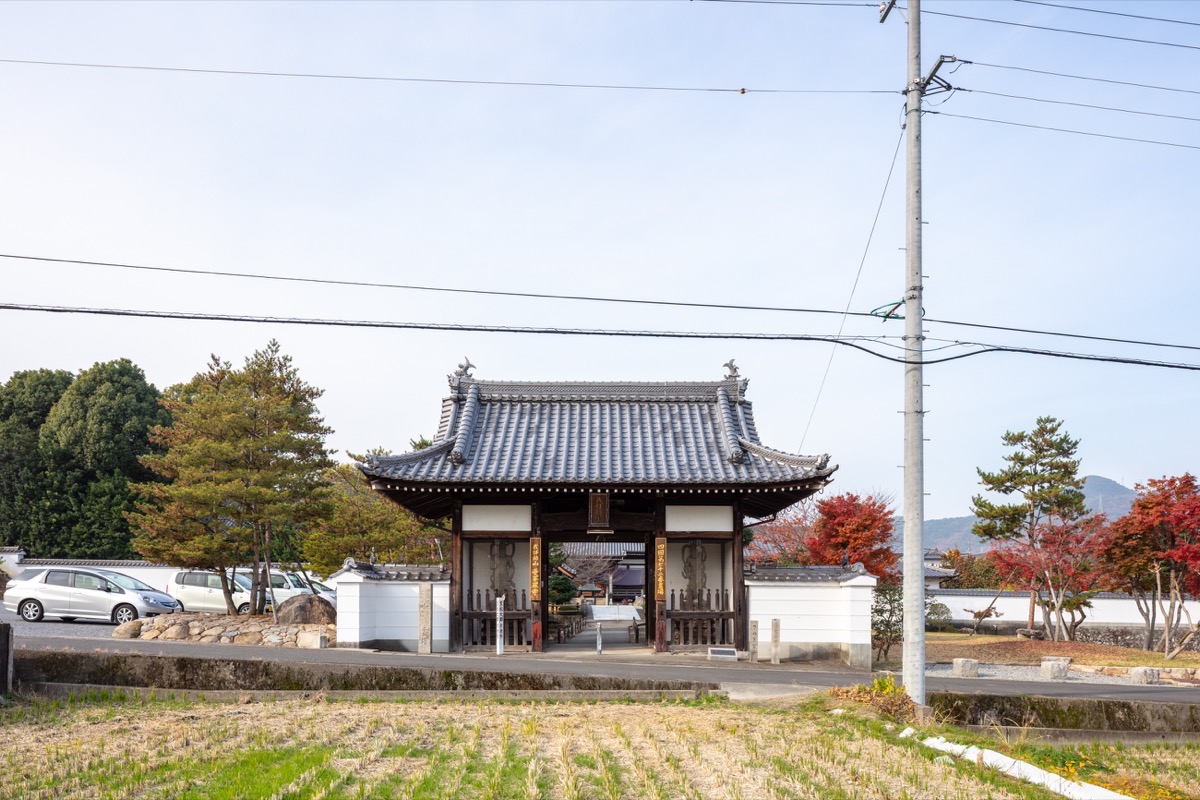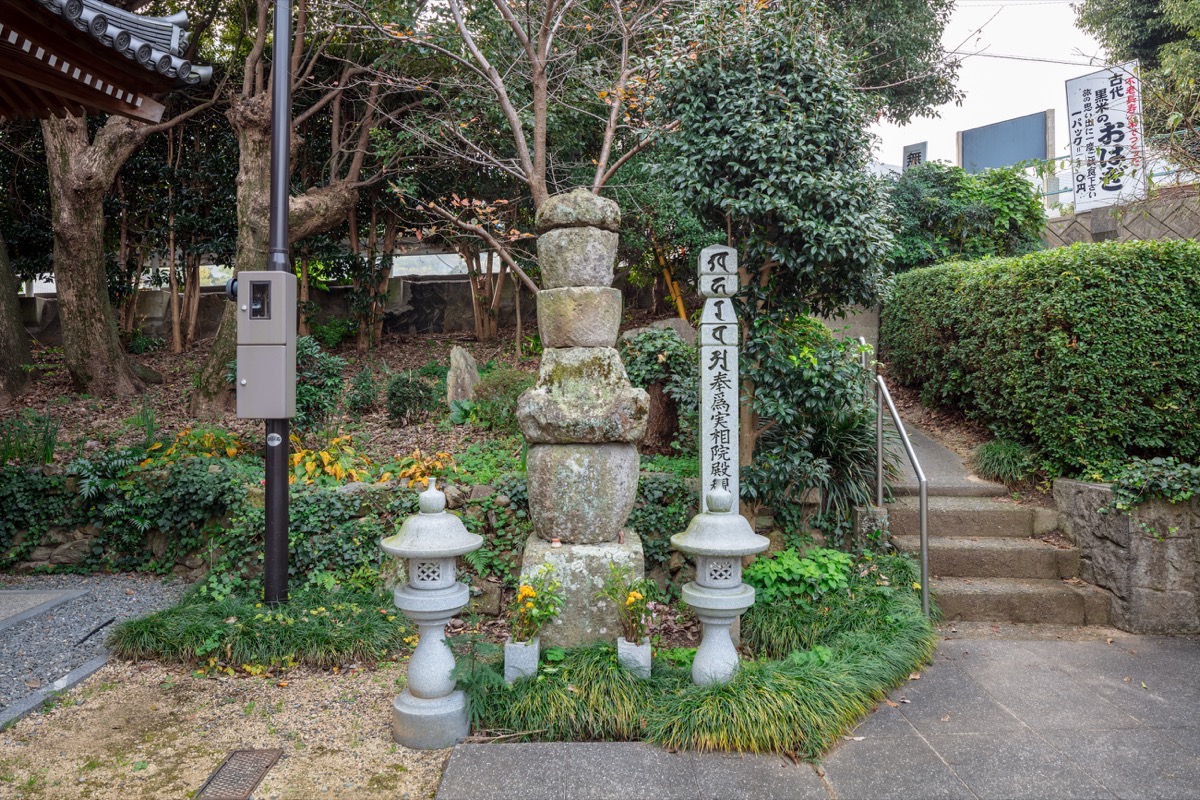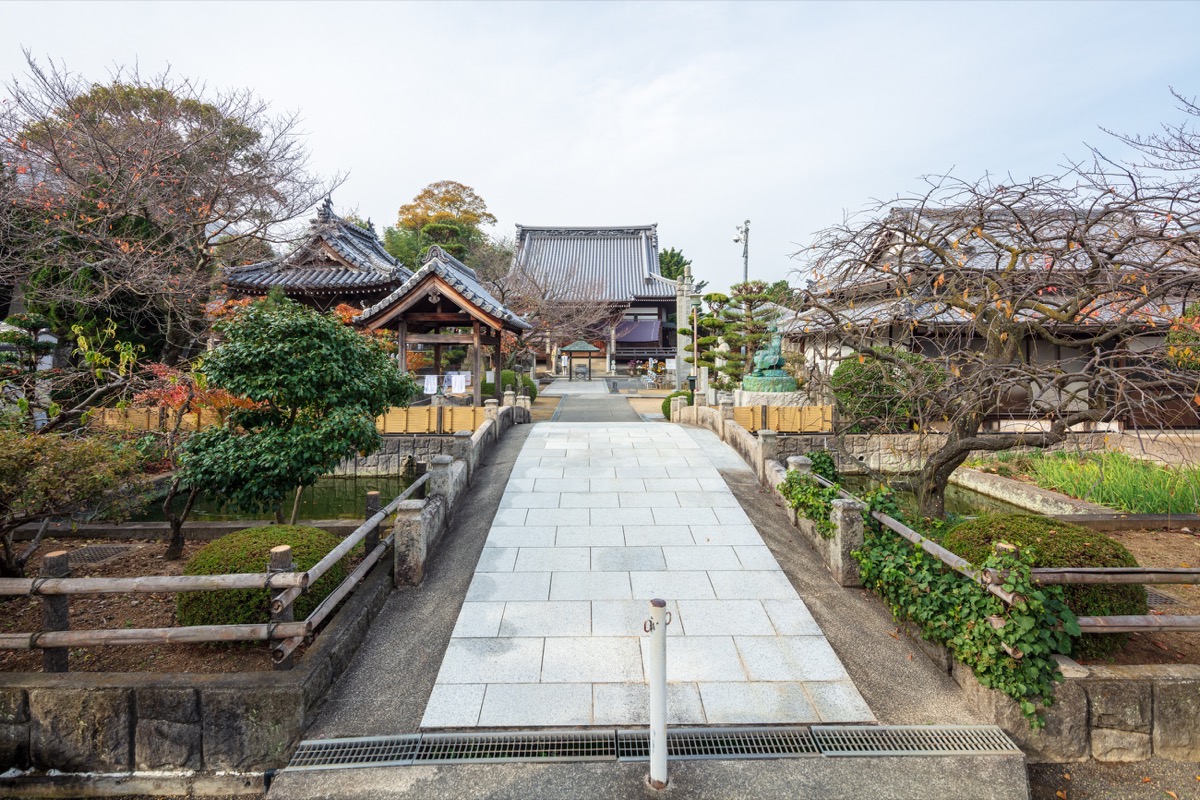Mandaraji TempleThe 72nd Temple Mandaraji Temple
| District | Shikoku Henro pilgrimage | Period | ー |
|---|---|---|---|
| Set Content/Set Date | |||
| Owner | Mandaraji Temple | Location | 1380-1 Yoshiwaracho, Zentsuji, Kagawa |
Mandaraji Temple, the 72nd sacred spot on the Shikoku Henro pilgrimage, is located at the foot of a mountain range consisting of five mountains. From the west, these mountains are Mt. Hiage, Mt. Naka, Mt. Gabaishi, Mt. Fudenoyama, and Mt. Koshiki.
According to writings documenting the temple’s origins and history, Mandaraji Temple was built in 596 (Suiko 4) by Kobo Daishi's ancestors, the Saeki Clan, making it the oldest sacred spot on the Shikoku Henro. Kobo Daishi (Kukai) visited this temple in 807 (Daido 2), and it is said that he built the main hall and the two-storied treasure pagoda as an offering to pray for his mother's Buddhahood and happiness in the afterlife. He also carved a statue of the Dainichi Buddha and enshrined it as the temple's main object of worship.
Today, there is a Nio Gate built on the east side of the temple grounds, and visitors will find the main hall facing them when they pass through. However, images from 200 years ago during the Edo period show that worshippers used to enter the temple grounds not from the east, but from the north, and that there was a Daishi Hall built to the right of the main hall at that time.
This temple has deep ties to the late Heian period monk and poet, Saigyo, who lived nearly 1,000 years ago. On the temple grounds, one can find "Saigyo's Napping Stone", where he is said to have slept, as well as the cherry tree where he hung his hat.
Also, there is a monument on the temple grounds showing people gathering to provide osettai hospitality to pilgrims from Konkocho and Kurashiki City in Okayama Prefecture.

